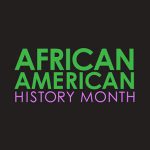History and Purpose of African American History Month
African American History Month grew out of the efforts of Carter G. Woodson, a historian and native of Buckingham County. The meaning and scope has changed significantly since its inception in 1926; however, it still remains critical that we, as educators, make African American history and people more visible in our curricula. We believe that one of the most important shifts we can make is to use the month of February to commit and take action to center African American history, agency and excellence in our curricula and instruction throughout the year. To read more about the continued importance of African American history, visit the National Museum of African American History & Culture’s Knowing the Past Opens the Door to the Future: The Continuing Importance of Black History Month.
A note about language:
We are using the language of “African American history” rather than “Black history” in order to focus on the specific contributions and history of African Americans, rather than focusing more generally on Black history and people. We are doing this to be precise in our language and to be cognizant that Black history encompasses a broader range of peoples and history.
Simulations:
When it comes to issues like slavery, simulations have the potential to do way more harm than good, so we encourage you in the strongest terms not to do them. For more on why, visit Teaching Tolerance’s Classroom Simulations: Proceed With Caution.
Resources
We are sharing the following resources to support you for African American History Month and throughout the year:
- Guidance on Culturally Responsive Curriculum and Instruction
- Self-assessment to consider strengths and areas for growth related to implementing African American History Month activities
- Instructional resources to support:
If you have questions or would like more support, please reach out to the Office of Community Engagement or the Department of Instruction.
